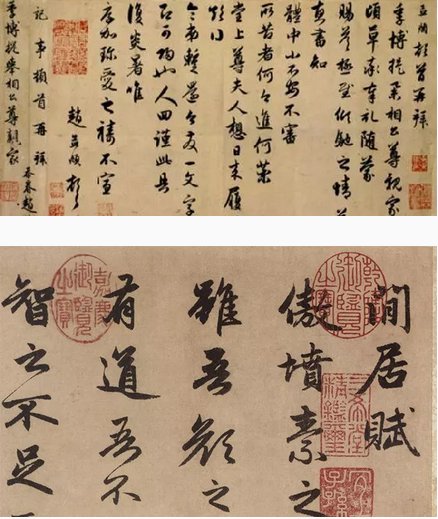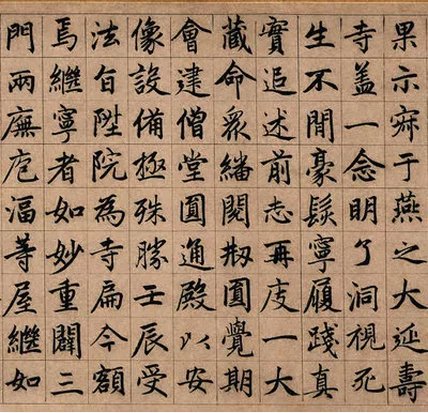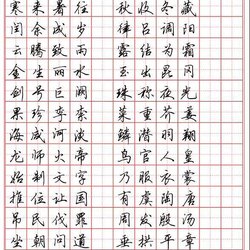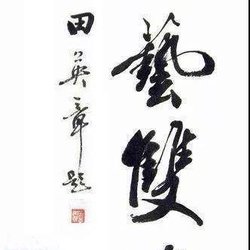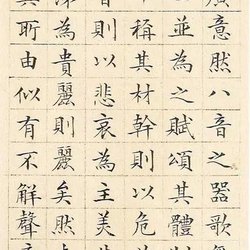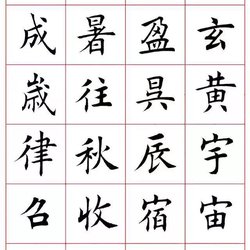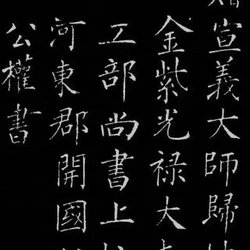The Four Masters of Regular Script are the collective name for the four calligraphers who are famous for their regular script in the history of calligraphy. They are also called the Four Great Regular Scripts. They respectively refer to: Ouyang Xun of the Tang Dynasty (Ou Ti), Yan Zhenqing of the Tang Dynasty (Yan Ti), Liu Gongquan of the Tang Dynasty (Liu Ti), Zhao Mengfu of the Yuan Dynasty (Zhao Ti)
1. European body
Ouyang Xun, courtesy name Xinben, was born in Linxiang, Tanzhou (now Changsha, Hunan). He was a famous calligrapher in the Tang Dynasty. He once served as the crown prince, so people called him "Ouyang Shugeng". In the Sui Dynasty, Ouyang Xun's calligraphy enjoyed a high reputation. In the Tang Dynasty, Ouyang Xun, who was nearly seventy years old, was still teaching calligraphy at the "Hongwen Museum". Ouyang Xun studied Wang Xizhi's calligraphy in his early years. It is said that he paid a lot of money to buy the "Zhigui Tu" used by Wang Xizhi to teach his children to practice calligraphy, and he copied and studied it day and night. Another time when he went out with Yu Shinan, he saw a stele written by Suo Jing, a calligrapher of the Jin Dynasty. He sat on the ground and carefully observed, traced and studied next to the stele for three days. This shows Ouyang Xun's deep interest in calligraphy. Later, he extensively studied the tablets and stone carvings of the Northern Dynasties. At the same time, he absorbed the strengths of some local calligraphers, and then integrated them into the official script style to form the "European style" (also known as "Lugeng style") that is "strong and dangerous, with flying fonts". .
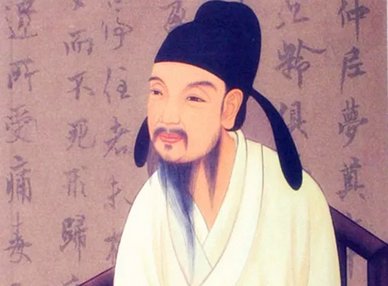
Style features
Ouyang Xun's calligraphy combines the characteristics of Han Li and Jin Dynasty regular scripts, as well as the six dynasties' inscriptions. It can be said that he draws on the strengths of each calligraphy school. The main characteristics of Ouyang Xun's calligraphy style are rigorous and neat, upright and vigorous. Although the font is slightly longer, the intervals are white, neat and rigorous, the middle palace is tight, and the main stroke is elongated, which makes it appear vigorous and unrestrained, sparse and dense, all sides are well prepared, eight sides are exquisite, the charm is vivid and just right. The combination of stipples and the structural arrangement are flat in the center but steep and strong. Most of the fonts expand to the right, but the center of gravity is still very stable and there is no sense of inclination, so it has the interest of combining danger with uprightness.
Pen features
Ouyang Xun's calligraphy is square and straight, with a slight official style, strong and meticulous. Bao Shichen of the Qing Dynasty once said: "The fingering method of the European character is deep and solid, the force is penetrating to the end, and it is full of all directions, not to mention external force." That is to say, the European character emphasizes the fingering force, and the strokes written are strong and powerful, with inner strength, and are not excessive. It's lean but not too plump. Each stroke is one point too long, one point too short, and one point too short. The weight is appropriate, the length is appropriate, and just right. The use of European characters also pays attention to the strength of the middle part of the strokes. Some horizontal strokes look full in the middle, giving the impression of "central solidity"; the main strokes of some characters extend outwards, making the middle of the stroke more compact, especially the vertical strokes on the right half. , often exaggeratedly extended upward to show his superhuman courage. These are the unique features of European calligraphy pens.
Representative works
"Jiucheng Palace Liquan Ming" is one of Ouyang Xun's masterpieces. The inscription was written by Wei Zheng and records the discovery of a gushing spring by Emperor Taizong of the Tang Dynasty when he was vacationing in Jiucheng Palace. Ouyang Xun received the imperial edict.
The calligraphy of this stele is noble and solemn, with strict rules. The strokes are like squares and circles, and the structure is carefully arranged.
His representative works include "Huangfu's Birthday Stele" and "Huadu Temple Stele", and his running script works include "Zhongni Meng's Laying Ceremony" and "Thousand-Character Essay in Running Script". He has unique insights into calligraphy and has written calligraphy treatises such as "Eight Secrets", "Teaching Secrets", "On Using the Brush" and "Thirty-Six Methods". The "Inscription on the Relics of Zen Master Huadu Siyi", "The Monument of Yu Gonggong Wen Yanbo" and "The Monument of Huangfu's Birthday" are known as "the first regular script in the Tang Dynasty".
Ouyang Xun, together with his contemporaries Yu Shinan, Chu Suiliang and Xue Ji, were called the Four Great Masters of the Early Tang Dynasty. Both he and Yu Shinan were famous for their calligraphy in the early Tang Dynasty, and they were both called "European Yu". Later generations saw that their calligraphy was extremely dangerous in the ordinary, and was the easiest for beginners to learn, so they called it "European style".
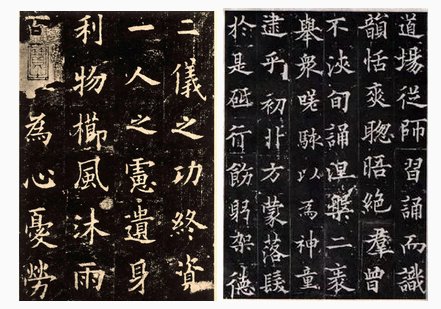
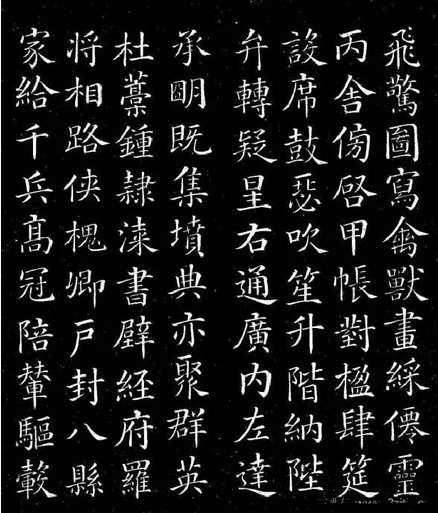
2. Face and body
Yan Zhenqing (709-785) was a native of Langxie Linyi (Linyi, Shandong). The courtesy name is Qingchen. He is a representative figure of calligraphy innovation in the mid-Tang Dynasty. His regular script is dignified and majestic, and his momentum is grand. The running script is soothing and refreshing, and the charm is flying. His calligraphy not only has the charm and rules of previous calligraphy styles, but is not bound by ancient methods. It breaks through the rigid rules of the early Tang Dynasty and becomes its own style, which is called "trembling style".
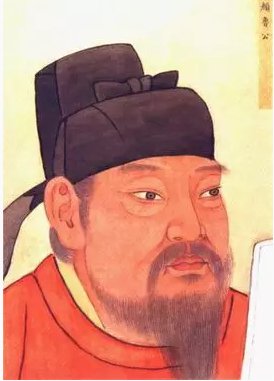
Yan Zhenqing was a Jinshi, and he first became famous when he was serving as the prefect of Pingyuan. When An Lushan raised troops in Fan Yang, all the counties in Hebei surrendered. Only Yan Zhenqing stayed in Pingyuan City, serving as the leader of the rebel army and doing his best for the Tang Dynasty. Finally, on Dezong's order, he went to the rebel general Li Xilie to persuade him to surrender, but unfortunately he was killed. His loyal and loyal deeds throughout his life enhanced his status in the calligraphy world. Yan Zhenqing's calligraphy is just like his character, with positive fronts from beginning to end. Therefore, the so-called stereotyped brushwork of Yanfa has less artistic value, but this brushwork can give full play to the composure and perseverance of men.
After the mid-Tang Dynasty, due to the separatist rule of vassal towns and frequent wars and disasters, the old system was on the verge of collapse. Yan Zhenqing's rise to establish a new model of regular script is a reflection of the principles of the Heart Sutra in rebuilding a new order. However, there was a distance between the strict regular script and the social background of the time. Therefore, after the end of the Tang Dynasty, the development of calligraphy art was concentrated in cursive script, and the classical model finally gave way to the individualistic lyrical style.
Style features
Yan Zhenqing's calligraphy, known as Yan style, has his unique style and brushwork. Yan Zhenqing's real calligraphy is majestic and dignified. The characters have changed from the long and thin ones in the early Tang Dynasty to square ones, with circles in the squares and centripetal force. The brush is thick and strong, and he makes good use of the center stroke. It is muscular and sharp. Generally, the horizontal strokes are slightly thin, and the vertical strokes, dots, strokes and strokes are slightly thicker. This calligraphy style is majestic, powerful, and has the atmosphere of the prosperous Tang Dynasty. His cursive writing is powerful, revealing true feelings, calm in structure, and full of stippling, which opened up a new world for cursive writing after the Wang School. Yan Zhenqing's running script is vigorous and vigorous. This style also reflects the prosperous style of the Tang Dynasty and is consistent with his noble personality. It is an example of the perfect combination of the beauty of calligraphy and the beauty of personality. Therefore, he was praised by later generations as "the second running script in the world" ".
Pen features
In the history of calligraphy, Yan Zhenqing is the most accomplished and influential calligrapher after the two kings. His calligraphy was first studied by Zhang Xu, the "Grass Sage", who was one of the four masters of the early Tang Dynasty. Later, he adopted the ancient method and reversed the calligraphy style of the early Tang Dynasty. He used seal script to transform thin and hard into plump and powerful, with a broad and magnificent structure. , with strong bones and majestic spirit, this style also reflects the prosperous demeanor of the Tang Dynasty and fits with his noble personality. It is a perfect example of the perfect combination of the beauty of calligraphy and the beauty of personality.
Yan Zhenqing occupies a special position in the history of Chinese calligraphy. The only person who can compete with the great calligrapher Wang Xizhi and shine successively is Yan Zhenqing. His calligraphy is mostly regular script and also includes cursive script. The stele written in regular script is upright, beautiful and powerful. He was born when regular script was popular and, opposite to Wang Xizhi's example, he ushered in a new trend in calligraphy.
Representative works
Yan Zhenqing's existing calligraphy works include: Duobao Pagoda Stele, Yan Family Temple Stele, Yan Qin Li Stele, Magu Immortal Altar Story, Nephew Memorial Manuscripts, etc. He and Liu Gongquan, another calligrapher in the Tang Dynasty who was famous for his regular script, were collectively called "Yan Liu".
He has many calligraphy works, and it is said that more than 130 kinds have been handed down. The regular scripts that are valued by future generations include the regular script "Duobao Pagoda", "Oriental Painting Praise Stele", "Magu Immortal Altar", "Guo Family Temple Stele", "Yan Qin Li Stele", etc. These regular scripts on the stele have individuality and characteristics. It has an informal front, solemn but not dangerous momentum, but the strokes are thin horizontally and thick vertically and the feet are too fast. When learning, you should pursue its charm and not simply pursue the similarity. His running script "Manuscript of Memorial to Nephew Jiming" is a masterpiece created with grief and indignation, and is known as the second running script in the world. There are also running scripts such as "Tie for the Seat" and "General Pei's Tie".
"Duobao Pagoda Stele", the full name is "Inscription on Duobao Pagoda of Qianfu Temple in Xijing, Tang Dynasty": regular script, written by Cen Xun and inscribed by Xu Hao. The font is well-proportioned and plump.
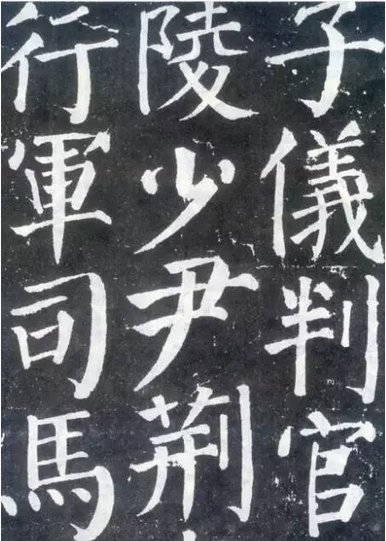
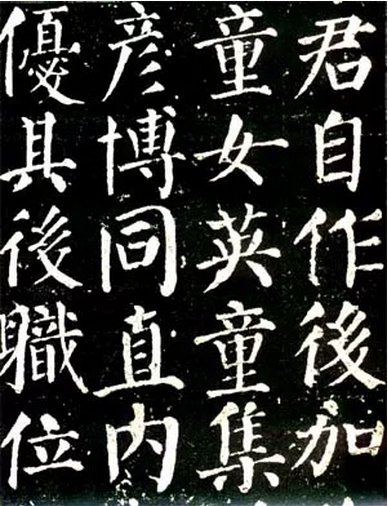
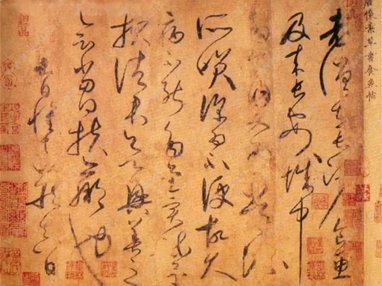
3. Willow body
Liu Gongquan (778-865) was born in Huayuan, Jingzhao (now Yaoxian County, Shaanxi Province). He rose to the rank of Prince Shaoshi, and was known as "Liu Shaoshi" in his old life. He first learned Wang Xizhi's calligraphy, and later read modern calligraphy. He tried his best to change his military style, learned from Yan Zhenqing, and incorporated his own new ideas, so that his calligraphy avoided being thin horizontally and thick vertically. , the stippling is crisp and straight, the bones are strong and the structure is tight. Many calligraphers in later generations take Liu Zi as a model.
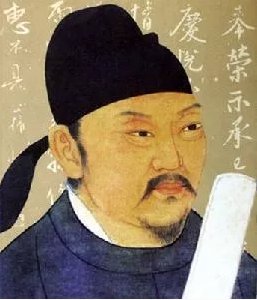
He became a Jinshi at the age of 29 and worked as a low-level official in the local area. Later, Emperor Mu Zong of the Tang Dynasty accidentally saw his handwriting. As soon as he became a calligrapher, he was summoned to Chang'an by the court. At that time, Liu Gongquan was already in his forties. He is both strong-minded and meticulous as a person, and similarly, his words also reveal this part of his character. Because of this, his reputation and status in Chang'an increased, and the princes and nobles spent huge sums of money to hire him.
Style features
Liu Gongquan's regular script incorporates Ouyang Xun's brushwork. He often intersperses some strokes closely, making the wide areas particularly open. The strokes are thin and vigorous, and the edges and corners are sharp. Although the strokes were written by Yan Zhenqing, they are different from Yan Zhenqing's vigorous and broad strokes, making him particularly heroic. people. He first studied Wang Xizhi and studied the brushwork of Ouyang Xun and Yan Zhenqing, and then became his own style. The regular script he writes is vigorous and charming, with strong bones and strong morals. Compared with the Yan body, the Liu character is slightly thinner, so it is called "Yan Jin Liu Gu".
Representative works
He has many handwritten works handed down from generation to generation, among which the most influential ones include "Mysterious Tower", "Shence Military Monument", "Diamond Sutra", etc.
1. "Shence Military Monument": regular script, established in the third year of Huichang in the Tang Dynasty (843 AD). It is one of Liu Gongquan's masterpieces. It has a more distinctive calligraphy style than the well-known "Mysterious Tower" in later generations. The structure layout is stable and even, tight on the left and comfortable on the right. It is also a better example for writing.
2. "Liu Shu Diamond Sutra": regular script, engraved in April, Changqinggang Year, Tang Dynasty (AD 824). The original stone was destroyed in the Song Dynasty. An only copy of Tang rubbings from a stone chamber in Dunhuang, Gansu has been handed down from generation to generation without any damage. It is now in the Paris Museum in France. Critics believe that the Diamond Sutra in regular script has the advantages of Zhong (Yao), Wang (Xizhi), Ou (Yang Xun), Yu (Shinan), Chu (Suiliang), and Lu (Dongzhi), and is of high artistic quality. value.
3. "Mysterious Tower Stele": regular script. It was erected in the first February of the first year of Huichang in the Tang Dynasty (AD 841). The original stele now exists in the Stele Forest in Xi'an, Shaanxi. This monument is the most famous among the calligraphy handed down from generation to generation. It is one of the most influential regular script models in history.
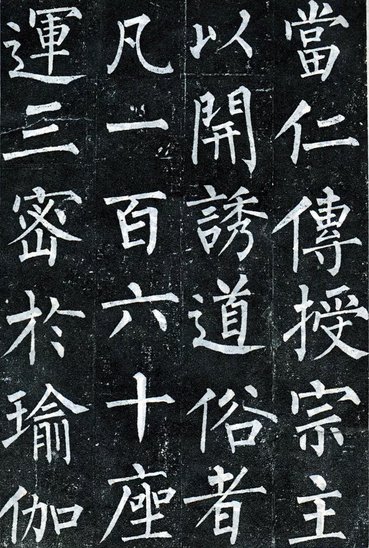
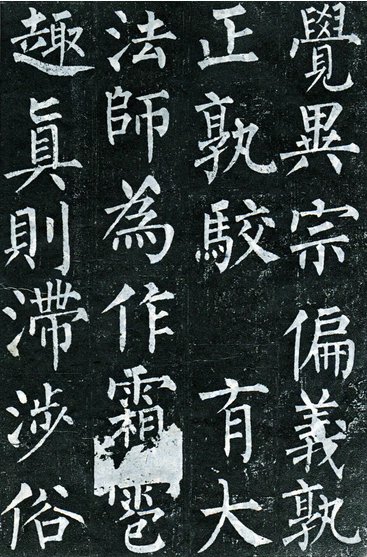
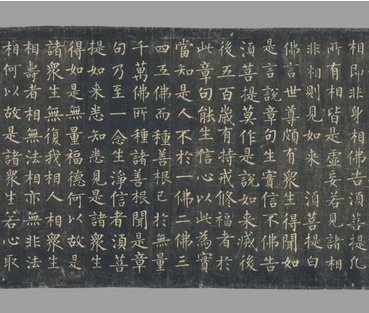
4. Zhao Ti
Zhao Mengfu (1254-1322), whose courtesy name was Zi'ang, was also known as Songxue Taoist. He was the most prominent painter in the Yuan Dynasty and a painter who had a wide influence at that time and in later generations. Descendants of Qin Wang Defang, the son of Emperor Taizu of the Song Dynasty. After the fall of the Song Dynasty, he returned to his hometown to live idle. Later, he was recruited by the emperor of the Yuan Dynasty and served in five dynasties. He became a scholar in the Hanlin Academy, received the imperial edict, was honored as a doctor, was granted the title of Duke of Wei, and was given the posthumous title of Wenmin. He is good at seal script, Li script, Kai script, Xing script and Cao script, and is the best in ancient and modern times. He is the author of "Songxue Zhaiji".
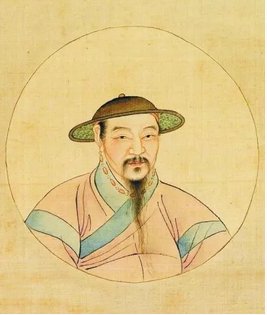
Style features
Zhao Mengfu was an influential calligrapher in the early Yuan Dynasty. "History of the Yuan Dynasty" originally said, "Meng Fu's seal scripts, seal scripts, and official scripts are all the best in ancient and modern times, so he is famous all over the world for his books." High praise. According to Song Lian of the Ming Dynasty, Zhao's calligraphy learned from Siling (that is, Song Gaozong Zhao Gou)'s calligraphy in his early years, who "understood the eight wonderful methods and paid attention to the ancient elegance". .
Zhao Mengfu also touched the Dingding Monument of the Yuan and Wei dynasties as well as Yu Shinan, Chu Suiliang and others of the Tang Dynasty, and gathered the great achievements of the previous dynasties. Therefore, Zhao's success in calligraphy is inseparable from his ability to absorb the strengths of others. What is particularly valuable is that most calligraphers in the Song and Yuan Dynasties were only good at running and cursive styles, but Zhao Mengfu was able to master all styles. His articles are unparalleled in their time, and they also refer to the teachings of Buddhism and Laoism. Many later generations learned Zhao Mengfu's calligraphy, and Zhao Mengfu's calligraphy was very popular in Korea and Japan.
Representative works
There are also excellent works in Zhao's regular script, such as "Sanmen Ji", which has a broad, profound and stable structure, smooth and rounded writing, and is most suitable for use as copybooks. Most of Zhao's handed down works are written in regular script, and most of them are written with exquisite penmanship and precise wording. For example, "Chibi Fu" can be regarded as a classic.
